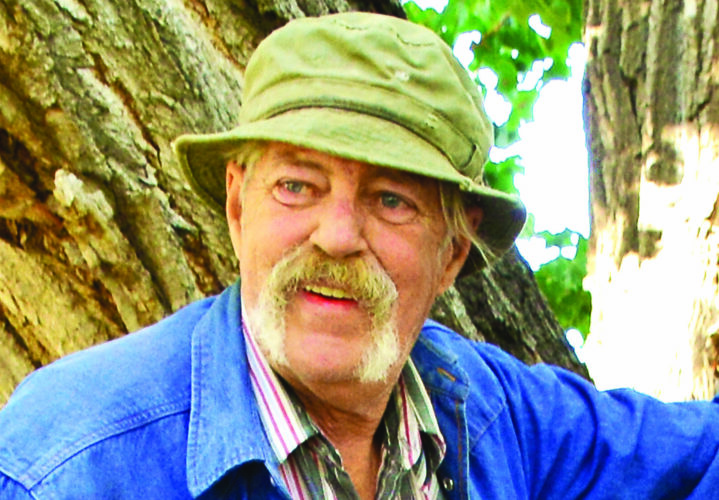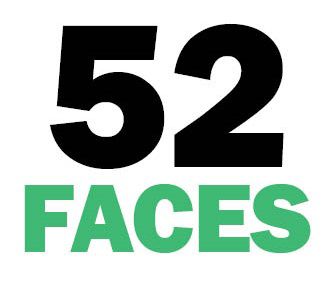
Paul Harden has volunteered with the Socorro County Historical Society since he moved to Socorro in 1977 to work for the Very Large Array.
Photo courtesy of Paul Harden

How did you get involved with the historical society?
I came here in 1977 and stomping around, I went to the town of Riley or Santa Rita and there was a grave there that said, ‘Daniel Bustamante, killed by Bronco Bill Walters.’ I did a lot of research and it took me a long time to find that story. It turns out that it was the result of a train robbery and two sheriffs were killed in a shootout with the outlaws. It made me realize how much history there was around here. The Camino Real brought people here in the late 1500s, early 1600s and up to the present time. Socorro has more history than Santa Fe. Just kinda felt like it needed to get documented. There was very little documentation so I joined the historical society about the time Clarence Hammel gave the brewery building to the historical society and helped get that off the ground and have been involved with it ever since and documenting the history. I wrote a monthly history article for the Chieftain for 11 years to help document and promote the local history, which was always well received.
What was it like working on the Hammel building and turning it into a museum?
It took a lot of work. The historical society raised money so we could get a new roof put on it, which is still there. A lot of the woodwork, the building was in pretty good shape itself, but a lot of the internal stuff was in pretty bad shape. We had to rebuild stairs going up to the second and third floors and things like that. At that time, the historical society didn’t have a whole lot of holdings. It was all stored in a railroad box car. We took all that stuff over to the Hammel and slowly started building up the holdings of the society.
What else have you done for the historical society?
The Hammel Brewery was started by a German family called the Hammel’s. They came over here from Bavaria and his uncle was a guy named Anheuser and he started a brewery out east. Because he had some health problems, he came to New Mexico. That is why one of the names for it was the St. Louis Brewery is because he got all of his hops and stuff from Anheuser which started the Budweiser company in St. Louis. They started an Oktoberfest for their employees and eventually, it grew into a town event to celebrate the Germans that lived in Socorro. Shortly after the historical society had possession of the brewery building, we started an Oktoberfest which has been held every year since, I think, 1982, except for now. It’s always been a big hit. We cook our own food and brats and things like that. We have local bands and entertainment groups perform. We usually have around 200 people show up. It’s always been a good event. We also have an annual meeting and we have a guest speaker, sometimes locally, sometimes from elsewhere that gives a talk on something. We also run auto tours where you drive your own car and we escort you to various historical places. The most popular is San Marcial which was a town of about 1500 people. It got totally wiped out from the flood in 1929. A lot of people like to go down there, but they never see anything because they don’t know where to look. We take them down there and show them the remnants of some of the buildings and where the bank and Harvey House once were located. That is a New Mexico town that is no more. There is very little left of it. It was totally destroyed by a flood in 1929 and then they rebuilt the town, started to, and that got wiped out in the 1937 flood. The Army Corps of Engineers declared the area inhabitable. You couldn’t get bank loans or insurance or anything. There is nobody living down there today.
What has been your favorite project for the historical society?
There are a few things, local subjects, that I have devoted a lot of interest and time in. One is finding and mapping the Camino Real Trail, which has been abandoned for 160, 170 years. There is a lot of it. You can still see it on the east side of the river. I’ve mapped it from outside of Truth or Consequences all the way up to Las Nutrias. Some of the pueblos that were located along that route, there are about a dozen pueblos right on the other side of the river from Socorro. They were all abandoned in 1680 with the Pueblo Revolt. The Bronco Bill’s train robbery was certainly a big interest in mine. I helped a gentleman named John Tanner write a book on it. That is well documented. Some of the mining history. Some aspects are worthy of further research. I’ve been documenting as much of it as I can, including photographs, using my drone to get photos.
How do you find out the information and research everything?
Socorro is really unique in that a lot of the families that live here are the descendants of many generations of people who have lived here. Unlike most towns in the country where families have dispersed throughout the country, Socorro is very unique in that families have been here for generations going to the 1600s in some cases. It’s just a matter of tracking them down and talking to them. When I did the articles for the Chieftain, I spent a lot of time talking to people and interviewing them. It was amazing some of the stuff that people have in their homes — historical artifacts from the Civil War and whatnot that are Smithsonian-grade sitting in their closets. That makes the history even more intriguing about Socorro because so many of the prominent people who grew Socorro, particularly in the 1800s and the arrival of the railroad and stuff, is those families are still here. It’s pretty easy to talk to them and they are proud of their family history and enjoy seeing it in print or on the website. We get contacted a lot too from people who grew up here and went to California or something. Now that they are retired, they decide to look into their family. We try to help them out as much as we can, but we don’t do genealogy research for them and that’s what they expect us to do sometimes.
Why do you want to document the history of Socorro?
I think Socorro is an overlooked community in terms of the historical importance of New Mexico. The first European settlers arrived here long before the Mayflower and Santa Fe was established before the Mayflower. New Mexico in general just has a much different history than the rest of the United States. It really has nothing to do with the Manifest Destiny and the expansion. This was Spain, the territory of Spain, until 1823 and then it became part of Mexico until 1848. The United States is kind of the newcomer. That is why the culture and stuff in New Mexico is so unique and so heavily both Spanish and Mexican — this wasn’t part of the United States until the Mexican-American war in 1848. Even though it was declared a U.S. territory, Texas wanted it as part of Texas. It wasn’t until 1850 that it was finally settled in the Supreme Court. They wanted everything up to the Rio Grande as part of Texas. It was no-man’s land for many, many years up until the Civil War. That’s why there were several Civil War battles here in New Mexico. One of them just south of Socorro — that San Marcial area. A lot of local people, New Mexico volunteers, helped fight on the Union side and most of the Confederates that came in were Texans. That is the reason so many New Mexicans fought for the Union is because they didn’t see themselves as fighting the Confederates, they saw themselves as finally having their chance to fight the Texans.
What other interests do you have?
I am a ham radio operator. I get on the air several times a week. In Fact, it’s been a good COVID-19 pastime. Ham radio is the perfect social distancing. I did electronics for a living so I still like to play around with electronics. I like to build my own equipment and put it on the air. Four-wheeling around, which is sort of part of the history. I certainly enjoy flying my drone, which is somewhat related to the history. I’m involved in a couple of sports car clubs. We go on drives once a month in different places. Not lately, but since I retired, I’ve kept myself quite busy doing things.
Four-wheeling?
I grew up in Southern Colorado and I bought a Jeep back then. When I came here, I decided to get another one. It just makes it so much more convenient to go stomping around. Particularly, when I decided years ago to try and document as much of the history – old ranch houses, mines and stuff like that. As I did this, I started to see this stuff slowly disappear. The Camino Real, I have been mapping it for 40 years. There is a lot of it that is starting to disappear. It’s just getting overgrown with vegetation. I’ve got complete GPS tracks of it. Pretty soon, GPS positions and photographs and some of the video I have flying down the trail is all that’s going to be left of it. I think that’s true with a lot of the history around here. The houses are getting torn down and buildings collapsing, the various mines are getting shut down… There are a lot of well-meaning programs that are unintentionally destroying our history. If you don’t document it, it’s gone. There are so many people who have been here for many generations so that history is important for them too.
Sport cars?
When I bought my Jeep, I had a neighbor that offered me his MG for $400. I bought it. This was back in the late 1960s. That was a lot of fun. Then you get married and have kids and the two seat car just doesn’t happen. I decided that when I retired, I was going to get another sports car. I ended up getting it several years before that because I couldn’t wait. The kids were gone and everything. It’s just a fun car to drive.
What brought you to Socorro?
I was in the submarine service for almost nine years. When I got out, I wanted to return to Colorado or perhaps New Mexico. I ended up getting a job when they first started building the VLA. I thought, ‘this would be a nice job for about three years.’ Once it was completed, I continued to stay there and ended up working here for almost 40 years. I loved the work. I loved working at the VLA. I loved the community of Socorro and the history. There was no reason for me to leave.
What did you do for the VLA?
Mostly electronics. I worked for different divisions throughout that time, but it was all electronics and mostly with the receivers and designing some of the low-frequency receivers and things like that.
If you could change one thing about Socorro, what would it be and why?
I don’t know if I really have an opinion on that. I think a community just evolves in the direction it wants to evolve in. I would say if there is one thing I would like to see different, not necessarily with Socorro itself, but in the whole county, is just to see a better relationship with the Alamo Navajo community. That is the second-largest community in Socorro County. Those people are often just kind of ignored because they are a long ways out there. They are at the end of the road and you don’t drive through there. They are wonderful people. It’s an amazing history itself as to why they are there. They are considered the “lost tribe” by the Navajo Nation. It just seems like they don’t get a break out there. They are wonderful people and it would be nice to see Socorro, the community and the county, involve them more. It’s a wonderful community (and) wonderful people. An amazing history that many few people know about.





















